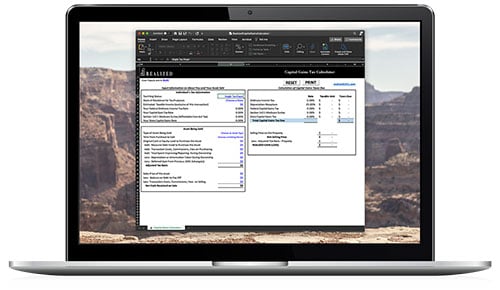
A Practical Guide for Investment Property Owners
For investors accustomed to navigating real estate transactions and capital gains, the concept of capital losses may feel like foreign territory. But, it can become an important tax concept in a down market—or after a sale that results in a loss. One of the most frequent questions from investment property owners in this position is: Can capital losses be carried back to offset previous gains and potentially generate a refund?
The short answer for most individual taxpayers is no; capital losses generally cannot be carried back. However, they can be carried forward, and in specific cases—such as for certain business entities—there may be limited carryback opportunities. Let's explore what that means for your real estate portfolio.
Capital Loss Basics
A capital loss occurs when a capital asset—such as investment real estate—is sold for less than its adjusted basis (typically the original purchase price, plus improvements, minus depreciation).
- If your total capital losses exceed your capital gains in a tax year, you're left with a net capital loss.
- The IRS allows individuals to deduct up to $3,000 of net capital losses per year ($1,500 if married filing separately) against ordinary income.
Any unused losses may be carried forward indefinitely to offset gains in future years.
No Carryback for Individuals
Under current U.S. tax law, individuals cannot carry capital losses back to prior tax years. That means you can’t use this year’s loss to offset a gain from a previous year and generate a retroactive refund.
This can be frustrating for investors who have realized large losses after having significant gains in prior years—but unfortunately, carryback is not an option, unless the loss occurs within a C corporation or certain trust structures.
Loss Carryforward Strategy
Although carryback isn’t available, an investor can carry forward indefinitely to offset future capital gains.
Example: If an investor sells a rental property and incurs a $100,000 capital loss, they can:
- Deduct $3,000 of that loss against ordinary income in the current year, and
- Carry forward the remaining $97,000 to offset future capital gains from real estate, stocks, or other investments.
For investors with future gains, this carryforward may help manage taxable income over time.
Other Considerations
There are a few other key points to keep in mind:
- Capital losses ≠ passive activity losses (PALs). Losses from rental real estate might be classified as PALs under IRS Section 469. These are governed by different rules and may be subject to more restrictive limitations.
- Personal-use property losses aren’t deductible. Losses on second homes or vacation properties that aren't used for investment purposes cannot be claimed or carried forward.
Because of these nuances, it’s important to work with a tax advisor who understands the specific rules surrounding real estate.
Final Thoughts
While individuals cannot carry capital losses back, they can carry them forward indefinitely—and that may provide long-term tax planning benefits.
For investment property owners, this highlights the value of:
- Keeping accurate records
- Aligning gain/loss timing with future strategy
- Consulting professionals who specialize in real estate tax treatment
In a volatile market, using capital loss carryforwards as part of a broader tax strategy may help mitigate the impact of uneven returns over time.
The tax and estate planning information offered by the advisor is general in nature. It is provided for informational purposes only and should not be construed as legal or tax advice. Always consult an attorney or tax professional regarding your specific legal or tax situation.
Article written by: Story Amplify. Story Amplify is a marketing agency that offers services such as copywriting across industries, including financial services, real estate investment services, and miscellaneous small businesses.


